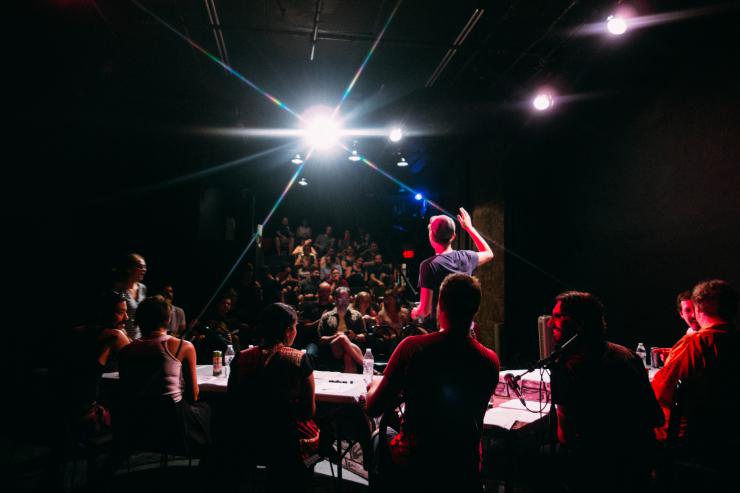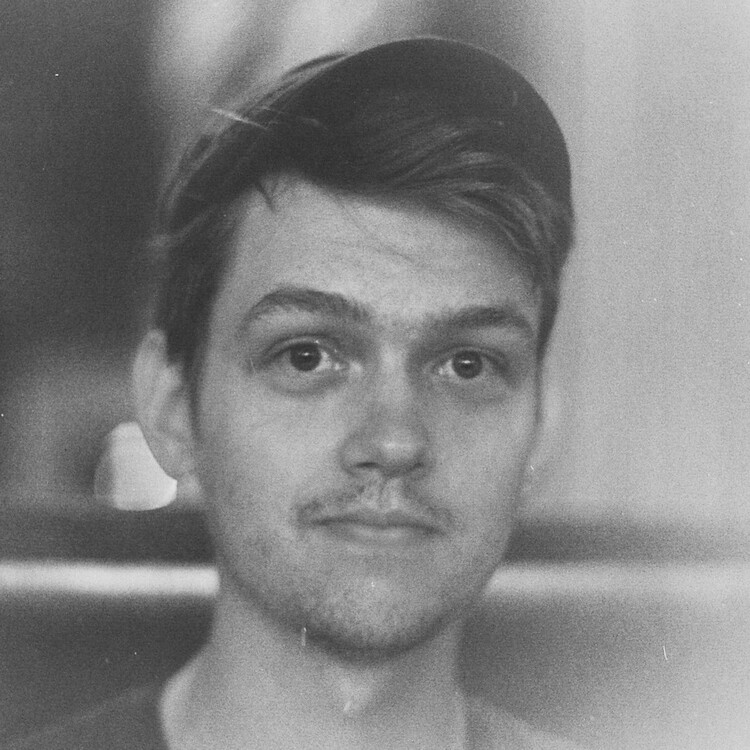Producing Advice from the Company that Named Themselves Team Awesome Robot
Part Two
This is the second installment of the blog series in which we, Team Awesome Robot, chronicle our production timeline. The first part was published a few months ago and contains useful bits of information about us and our process. You can find that post here, because we’re not spending too much time recapping in this installment. Onwards!
Hey there! How was your summer? Hot, productive, full of terrifying political events? Us too! Let’s go over what’s happened since we last spoke in June.
We held a fundraiser! Drinking and Dragons with Team Awesome Robot was a success! Our threshold for “success” being not losing too much money and everyone having fun, we were pleasantly surprised to make money! Not enough to negate the need for further fundraising, but some! And people definitely had enough fun to warrant us making this an annual event.
In producing, ‘Audience’ is synonymous with ‘Target Demographic.’ Our target demographic is not comprised of wealthy individuals looking for a tax write-off or a prestigious title to put on their resume. We can’t really cater to that demographic. Rather, the people who support Team Awesome Robot are a lot like us: artists, family, and friends who find value in spending time in the communities we attract.
So what did we do and how and why? We followed the same formula for our shows: content, location, collaborators, ethos, and a fifth part of the formula we neglected earlier: audience. We had a cool idea (get a diverse group of indie theatre names to play live Dungeons and Dragons with booze), we found a reasonably priced location (Gene Frankel Theatre), and asked a million of our friends to help us because, frankly, Dungeons and Dragons is really fun.
That all sounds great, but I want to focus on a particular aspect of this process that I believe directly contributed to the success of this event: We talked about it a lot for a long time. We started kicking the idea around in February, held our first of four playtests for the adventure in April, secured our space in June, locked down our players by the beginning of July, and held the event July 30th. We took the time to do it right, but the whole time we talked about it with our friends as a thing that we were genuinely excited to be making. Because enthusiasm begets either ambivalence (valid) or shared enthusiasm, we found our audience. That’s a really important part of producing that I neglected to mention in the first installment of this series: Identify your audience. Sometimes that’s as easy as saying, “We made a new play so the people who like new plays will be our audience.” Other times, it takes recognizing that not everyone who liked our last play will be all that into drinking...or dragons.
Audience Identification is why we wanted to do this kind of fundraiser. In producing, “Audience” is synonymous with “Target Demographic.” Our target demographic is not comprised of wealthy individuals looking for a tax write-off or a prestigious title to put on their resume. We can’t really cater to that demographic. Rather, the people who support Team Awesome Robot are a lot like us: artists, family, and friends who find value in spending time in the communities we attract. What sort of incentives do they want?
They want a good story, and maybe the opportunity to affect that story. So in addition to the $20 ticket price and alcohol with suggested donation prices, we also offered them the chance to purchase in-game items. Along with potions of healing and potions of fire-breath, they bought a Dagger of Kind Rejection for player Jesse Alick, Literary Manager at the Public Theater. Eventually they even gave us enough money to transform the useless prop sword at the beginning of the game into the Fundraising Sword of Awesome, which slew the dragon at the end.
All in all, the fundraiser cost us $769.79, and we were able to raise $1,875.08, with an additional $250 in the form of a matching gift (that sword, remember?). Next time, we’ll be sure to reach out to local breweries and wineries with a bit more notice in the hopes of getting our alcohol as tax-deductible donations. We’ll also seek out a space that can hold more people, because the demand was higher than anticipated. Lessons learned.

Now, on to the updates:
Production Updates
We have secured a performance space and dates! In New York City, at our budget level, that’s usually best done six months in advance. We did a lot of research on spaces within our budget before even going on site visits so we didn’t have to go on too many to know what was out there. It helps that both of us have worked in a lot of venues (and have friends who have worked in even more venues) in New York City, so we already had a sense of what kind of space we need for this project. The Access Theatre is a pillar in the New York independent theatre community, and we’re really excited to be working with them. The space is $2,300/week and we’ll be doing a twelve-performance run over three weeks from April 21 through May 7. We discussed renting the space a week earlier so we had more time to rehearse there, but ultimately decided we just aren’t at that level yet financially. It’s also worth noting that starting our rental a week early on April 10 would put Tech in conflict with Passover and our opening weekend in conflict with Good Friday and Easter, which would not be the wisest scheduling decision both for collaborators and audience.
As I’m sure you can imagine, this is a big step. Having production dates means we can build a basic rehearsal schedule, which means we can start looking at booking rehearsal space. So now we have actual numbers to plug into our budget, which helps us plan for fundraising. That’s coming soon, friends, and will likely be the subject of our next post at the end of the year—that and publicity which often goes hand-in-hand with fundraising.

Development Update
It occurs to us that this section threatens to become much more about marketing our production than helping you produce yours, which is not what we’re trying to do here. It’s important to note that even if we were working with an existing script our timeline would not change terribly drastically up to this point. In future installments of this series, we’ll document our process separately and will provide links for those who are interested. For now, here’s an update:
When we last checked in, we were in what we’re now calling Development Stage One: in which Daniel Kelley writes Da Ponte’s life using only the autobiography as source material and allowing the character to dictate the narrative. Written in four parts, that final draft came out to two hundred ninety pages. Five hours of some of the most entertaining and ridiculous storytelling we’ve been a part of. After taking stock of what we liked, we put that behemoth to the side and asked the following questions:
- What does Da Ponte want to achieve by telling his story?
- What themes from Da Ponte’s life are we interested in exploring?
- What do we want to learn from his experience?
Development Stage Two was about identifying moments when Da Ponte was forced to reinvent himself, and writing scenes to reflect them. This time we only used the actual biography as source material, and, oh man, were the circumstances different. We now call these scenes “sit down and eat your vegetables” scenes, since the character would prefer to stick to two hundred ninety pages of sweets.
Stage Three: We traveled to the Dragons Egg Studio in Mystic, Connecticut, with five actors to read over the latest draft which not only addresses Da Ponte’s chosen narrative, but what we’re interested in learning from him as well. I promise it won’t be five hours long. It was incredibly beneficial, providing us with a clear idea of what shape this play will have. Now it’s about identifying the needs of a production and meeting them as best we can. Wish us luck!



Comments
The article is just the start of the conversation—we want to know what you think about this subject, too! HowlRound is a space for knowledge-sharing, and we welcome spirited, thoughtful, and on-topic dialogue. Find our full comments policy here